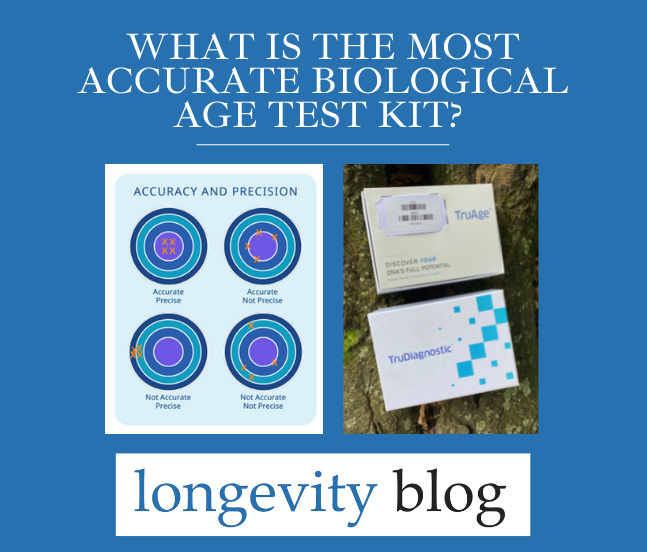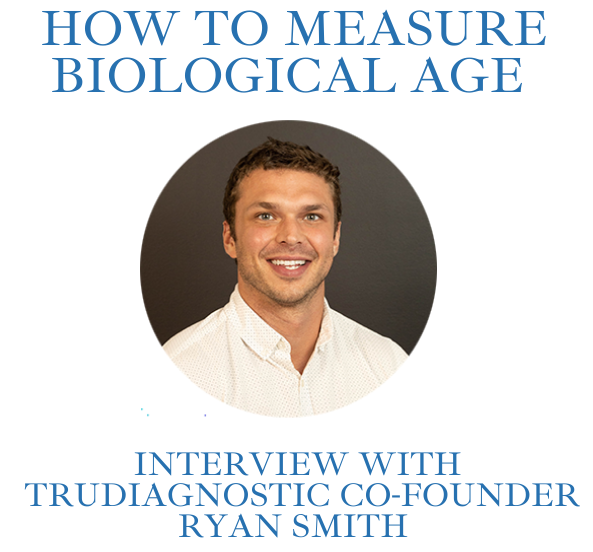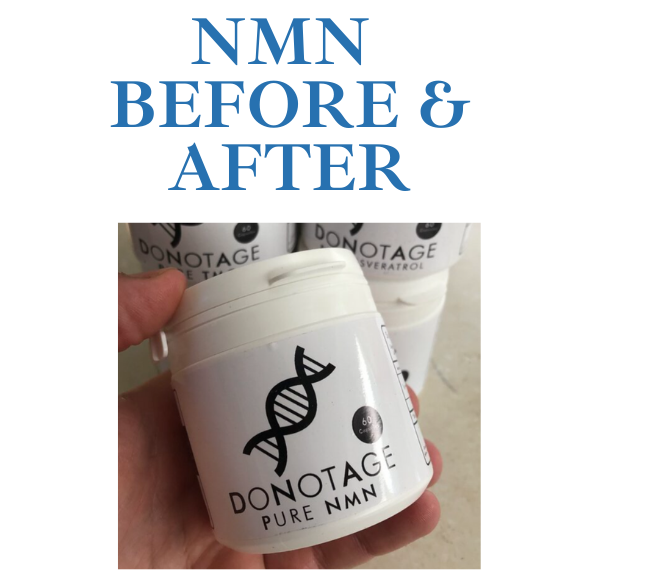What is the Most Accurate Biological Age Test? An Interview with Ryan Smith of Trudiagnostic (Part 1)
Trudiagnostic review: Most accurate Biological Age TEst
How accurate is the biological age test you are currently considering?
Great question, but you also need to ask - how precise is the biological age test?
What do we mean by this? If the difference between these two terms isn’t 100% clear to you, you’re definitely not alone.
The fact of the matter is, choosing the best biological age kit for you is not a straightforward decision, and with more test kits arriving on the market each month - you’ll be glad to know that Longevity Blog is here to help!
In this post, we cover the basics of ‘accuracy’ vs ‘precision’ and in our TruDiagnostic review, reveal why their kit is the best biological age test currently available (plus we score you a discount to purchase one!).
Biological age test technology is moving fast
Just like most of the longevity technology sector, biological age testing is advancing quickly.
And while we’ve previously reviewed some biological age testing companies, it is very important to keep you informed of the latest developments.
We have two very important updates for you.
Firstly, did you know that we’ve now moved into the third generation of biological age clocks?
What does that mean? These are algorithms which use longitudinal data collected from the same individuals to see determine how aging occurs over time.
Secondly, many of the first and second generation biological age clocks may have good accuracy, but they are not necessarily great at precision.
To illustrate what this means, if you were to send off three of the same saliva or blood samples to your biological age testing facility of choice, a highly precise laboratory would provide you the same biological age estimate each time. But if they don’t have great precision, you could get three different results.
A graphical representation of accuracy and precision (credit: TruDiagnostic).
For example, if your age is 35 and you get a biological age of 33, 35 and 37, that test kits only has a precision of around 2 years.
So, which results do you believe?
You might be surprised to know that many of the offerings on the market offer precision within 2-3 years.
What does that mean? It means that if you measure your biological age, test an intervention through a self-experiment, and then test again (which is how we recommend you use these kits) - your actual results could get lost in the ‘noise’ with low precision kits.
If this concerns you (and it should!), then you’ll be very interested to hear what our latest interview guest has to say…
TruDiagnostic review video: Hear it straight from the expert, Founder Ryan Smith.
latest developments in Bioaging with trudiagnostic CO-FOUNDER RYAN SMITH
Ryan Smith the Co-Founder and VP of Business Development at TruDiagnostic.
But don’t let his ‘business’ title fool you - he is exceptionally knowledgeable on the science behind epigenetic testing.
Ryan is a biochemist who founded Tailor Made Compounding, which became the 4th fastest growing company in healthcare in the US at the time.
In late 2019, he saw tremendous potential in epigenetic testing and analysis and co-founded TruDiagnostic, who now offer once of the most accurate and precise biological age test kits on the market.
Today, we ask him to walk us through these important developments in biological age test kit technology. Strap in and put your thinking caps on!
PARTNER Discount Code!
A part of our mission is to make your longevity budget stretch further.
Through our collaboration with TruDiagnostic, we have a negotiated a 12% off coupon code for our readers.
Use the code longevityblog at checkout and save!
This interview was conducted in August 2022 over Zoom and is an audio transcript with edits for clarity, brevity and correctness.
How do you estimate biological age?
Ryan Smith, Vice President of Business Development at TruDiagnostic is a wealth of knowledge on the latest developments in biological age testing. In this interview, we first explore the development of biological age ‘clocks’ and what it means for these clocks to be accurate and precise.
Longevity Blog (LB):
Ryan, thanks so much for joining us today. We have a very common question that we'd like to ask you to kick things off. And it's an important one, lots of people ask it:
How do you determine your biological age? Could you give us a general answer?
Ryan Smith (RS): Certainly! I think that the answer has changed throughout time. The search for biological age has always been important because of something called phenotypic variation - there's a lot of difference between how people in the same chronological age group age differently.
This definition of biological aging, searching for how the body is aging was very crude initially. Things like the number of your chronological age plus the number of packs per year you smoke, as a biological age. But as we've gotten more sophisticated they’ve culminated in epigenetic clocks, which are probably the most sophisticated methods to determine biological age.
Even these have a little bit of a history where they've continued to improve. Right now, what we're essentially doing is creating algorithms to predict someone's biological age. And we do that by having a cohort that we train these algorithms and then a separate group as a validation cohort. That's what we've done with epigenetic clocks, and it's why they're generally the most predictive of negative age related outcomes and why they're so powerful.
What is an Epigenetic Age Clock?
Epigenetics instructs your DNA on how to be expressed. All cells contain all of your DNA, but how do they know to be a liver cell, or a brain cell or a skin cell? Epigenetics is where this information is stored.
LB: You've mentioned “epigenetic clocks”, briefly remind our audience what these are.
RS: Epigenetic clocks are essentially a biomarker measurement. Age clocks can be created using any type of data set, but here the data that we're measuring is an epigenetic methylation.
For those of you who aren't familiar with epigenetics, it essentially is the regulation of your DNA.
Every single cell on your body has the same DNA sequence, it's what makes it individual to you. But how that DNA is expressed is different from cell to cell. It's why your skin can behave like skin cells and your heart can behave like heart cells. This is determined by what genes are expressed or turned on.
What we're measuring is DNA methylation, which is the off switch, generally, for most of those DNA expressions. We have a lot of DNA methylation in our cells, with over 29 million spots in each cell, which can be methylated. And every cell is different. So it's a lot of data.
Epigenetic clocks have been created by seeing the differences in aging at these different locations across individuals. And then creating a predictive algorithm to see if we can predict that change with age and see how close we can get to variables, like someone's chronological age, for instance.
How Do You Determine Biological Age?
Methylation of the DNA is the on or off switch for DNA expression. There are over 29 million ‘CpG’ sites in your genome where methylation occurs. The patterns of methylation change with aging, and therefore they make an excellent predictor of how old you are biologically.
LB: Biological age clocks have been around for about a decade, and they’ve advanced very quickly over the last few years.
Can you introduce us to this concept of the “generations” of epigenetic clocks that have emerged and an approximate timeline?
RS; The first ever biological age clocks came out in 2011, with the first really widely applicable clocks created by Dr. Steve Horvath at UCLA in 2013.
I will go on record by saying I think he might be nominated for a Nobel Prize for this work. It is really groundbreaking, because, for the first time, we're able to read with a very high accuracy: the age of someone's body.
The clock was originally created by looking at those epigenetic methylation changes across a few thousand patients and looking at what markers were most significantly changed with age. Some locations might have no methylation at young adulthood, but as as we get older, significantly more methylation or vice versa.
That's how he was able to create this predictive algorithm. But it was trained to predict someone's chronological age. Originally, it was used for really interesting applications, but not necessarily health applications.
One example is collecting DNA at a crime scene to see how old a criminal might. In the case of the refugee crisis with Syria, it was used to see if people were adults or minors, and therefore eligible for asylum.
How Does Biological Age Testing Work?
Our Founder Nick has tested the TruDiagnostic product, and was very impressed with the wealth of knowledge TruDiagnostic provided through just a few drops of blood!
LB: But the new applications in health began to emerge, as ‘older’ individuals were connected to poorer health outcomes. Tell us about this transition.
RS: The research field started to notice a pattern, which is that those people who were older with this test than their chronological age, were at significantly increased risk for negative health outcomes.
While those people who were younger than their chronological age, were protected against those same outcomes.
They discovered, for example, that being seven years younger biologically than chronologically reduced the risk of morbidity and mortality by 50%. So that was the first generation of age clocks.
Generations of Biological Age Test “Clocks”
LB: That's a little bit of a complicated concept that you're introducing here, so let’s make sure we make this very clear for the reader.
First generation clocks weren’t developed to predict risk of poor health outcomes, but in their application were discovered to be capable of doing this.
Now, with this realization, we begin to see the development of ‘second generation’ clocks which are designed to be predictive of age related health outcomes. Is this correct?
RS: Exactly. An important concept here is “hazard ratios” for disease. This is essentially the likelihood of developing a particular outcome. You can have hazard ratios for anything. You know, that hazard ratio for it raining, for instance.
For disease, the higher the hazard ratio, the higher your likelihood. Ideally, the bigger the change in the biological age, the bigger the change in hazard ratio. That's exactly what we're seeing as these biological age clocks get better. “Second Generation” clocks are now being trained not on chronological age, but on biological signals.
LB: Have the inputs to second generation clocks changed? Are there new variables which are being considered in the training datasets with second generation clocks?
“the key characteristic of the third generation of biological age clocks is using ‘longitudinal’ data sets, which follow the same person over time”
RS: In the second generation clocks, we have started to measure things like your blood based biomarkers that we know change with age.
For example, your red cell distribution width, your immune cell types and distribution, or your serum albumin. These are all things that change as we get older.
Then, for third generation clocks, which is really where we're at now, they did the exact same thing, but they did so longitudinally. So instead of looking at a lot of different patients over a lot of different time points, they looked at the exact same patients over a long time period.
By analyzing data longitudinally, we are able to get rid of other confounding factors, things like environmental exposures. For example, if we get these from a biobank, the amount of antibiotics that someone was exposed to 40 years ago might have been a lot less than what we're exposed to now. And vice versa. Another example is leaded gasoline instead of unleaded gasoline.
By looking longitudinally, you can sort of factor those things out, because you can sort of assume that the population you're looking across time has had similar exposures, especially if they're living in a similar area. And so what we're starting to do is to now get rid of all of these confounding factors which might be taking away sensitivity and specificity from the biological signals of aging.
A graphical representation of the concept of generations of biological age clocks. For more information, you can read this scientific study.
LB: So the key characteristic of the third generation of biological age clocks is using ‘longitudinal’ data sets, which follow the same person over time, and understanding how that biological age is changing over time based on environmental factors and tracking blood based parameters? Second generation clocks are missing this ‘longitudinal’ data.
RS: Correct. There is really only one third generation algorithm that currently exists, DunedinPACE. This clock uses 19 blood related biomarkers from a longitudinal study, where they tracked gum health, for instance, and leukocyte telomere length, which has classically been a very popular marker for biological age.
Biological Age Tests: Accurate or precise?
“Precision is very, very important, especially on a personalized medicine aspect. If you have a wide degree of technical variation, you’re just not sure if the change you’re seeing is real biologic change, or if it’s just noise.”
LB: TrueDiagnostic have differentiated their biological age test from other providers by offering the market’s only third generation clock.
Tell us why this algorithm is better for biological age predictions in very simple terms.
One of the things you shared at pre-interview is the ability of this clock to consistently make the same predictions off the same sample data. Maybe start there.
RS: We've already talked a little bit about how to judge an aging clock’s accuracy, right? Which is generally more predictive of negative health outcomes? The other thing we want to always talk about is precision of the algorithm. We want it to be both accurate and precise.
This has been a very big problem, actually, for these epigenetic clocks to date. One of the reasons I think early adopters have been a little bit disillusioned with these second generation tests is because they've had wide variability.
For instance, even with Dr. Horvath’s original algorithm he created in 2013, if you took the exact same sample and tested it twice, you could have up to 3.9 years of variation from even the same sample. That's a huge problem, because if you're looking to use this for reliable information to judge things like interventions, you wouldn't be able to test within a period of 3.9 years in order to get a statistically significant outcome.
Precision is very, very important, especially on a personalized medicine aspect. If you have a wide degree of technical variation, you're just not sure if the change you're seeing is real biologic change, or if it's just noise.
What is the Most Accurate Biological Age Test?
The ICC (intraclass correlation coefficients) score represents precision. How consistent is a given biological age clock at reproducing a biological age prediction off of the same sample? At far right is the algorithm used by TruDiagnostic, showing how precise the algorithm is compared to other methods.
LB: Okay, so there's some complicated concepts you're talking about there, we're discussing the difference between precision and accuracy.
You've gone into some detail about some of the limitations of second generation clocks, and where this newer third generation has a bit more precision.
Generally, when people are trying to make a decision about a biological age test, they'll ask a question that's a bit more simple, or perhaps even naive of some of these details between terminology for precision versus accuracy. They're going to ask, “Which biological age kit is most accurate?”
If you're talking to that layperson, what do you tell them?
RS: Whenever you get the results of any biological age test - you want it to be informative about why you think they asked the question in the first place. I think for most people it would be - Why do you want to quantify aging in the first place? The answer is that biological age is the biggest risk factor for most chronic diseases and death.
So if you want to quantify a risk factor, usually, it's because you want to change it right? And so in order to measure that, you really want it to be predictive of outcomes. So the most accurate clocks are going to be the ones that get higher when you're going to have worse outcomes for all age related markers. And as they get lower, you're gonna have more positive outcomes for all age related markers.
And the way that we measure that is called a hazard ratio. What is your likelihood of getting a particular disease if you're aging at a rate of one versus if you're aging at a rate of 1.1? And in General, the higher the hazard ratio, the more predictive and so I would measure accuracy by its ability to be associated with health outcomes.
There are Different Types of Biological Age: Extrinsic vs Intrinsic
An example of an intrinsic biological age test kit is GlycanAge, which tracks inflammation in your body by analysing your glycans. What are glycans? How can you use intrinsic age to self-experiment, why not read about it here?
LB: Often, biological age is discussed as if it's one number. But one of the things that we've learned through engaging with your testing kit and platform is that there's two big categories of biological age.
Extrinsic biological age and intrinsic biological age. So far, we've been talking about extrinsic biological age.
Tell us about intrinsic biological age.
RS: At the cellular level, biological age measurement is different in every cell. Your skin cells are going to be very different than your heart cells, in terms of what genes are turned on, and turned off. So ideally, if we were to do this test, we would do it on a single tissue type and that would be the most precise and accurate way to develop an algorithm.
But the problem is that for most of our body, we have a whole combination of different tissues making up any given organ. In our skin, we might have keratinocytes, cells, as well as fibroblast cells. In our blood, the majority of the DNA is from our immune cells. These include things like CD8 T cells and CD4 T cells, your monocytes, your basophils - you know, all of these different cell type markers.
TruDiagnostic’s Immune Age ReporT: An Intrinsic Biological Age
LB: So in simple terms, intrinsic biological age can be based on different cell types representing a given organ or systems in the body.
In your TruDiagnostic report, you've focused on the immune system for the extrinsic biological age.
There's this important concept in biological aging known as immunosenescence, which is the decline of immune system age. Talk to us about this process and how looking at an intrinsic age can help us understand how we are aging biologically.
From a TruDiagnostic ‘Immune Age’ report, a graphical representation of immunosenescence.
RS: As we get older, one of our most important immune organs, the thymus, starts to degenerate. We lose thymic volume and as a result that changes the amount of immune cells which are circulating in our blood.
This means the immune system generally becomes worse at doing its job, and isn’t clearing things that are not supposed to be in the body. Being able to quantify immune cell changes allows us to quantify the aging process in a different way.
We can gain a bit of insight into how the immune system is aging. One important measure is the ratio of CD4 to CD8 T cells. We would usually see this decrease as we get older - so the decrease in this ratio can be used as a snapshot of your immune system’s aging.
LB: Would it be accurate to say that extrinsic biological age is more responsive on a short term basis to interventions?
RS: Yeah, certainly. I think that the answer is we definitely see more variation on a day to day basis. These changes that are happening in your blood are happening at a very large scale and new changes are some things that we can detect. This biomarker can be trained for a wide variety of things.
LB: Thank you, Ryan.
TruDiagnostic are also providing an estimate of how fast you are aging….
Read Part Two of the Interview Here
FDA & TGA DISCLAIMER
This information is intended for educational purposes only and is not meant to substitute for medical care or to prescribe treatment for any specific health condition. These blog posts are not intended to diagnose, treat, cure or prevent any disease, and only may become actionable through consultation with a medical professional.





























